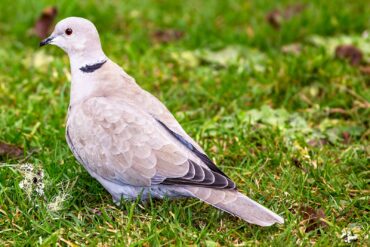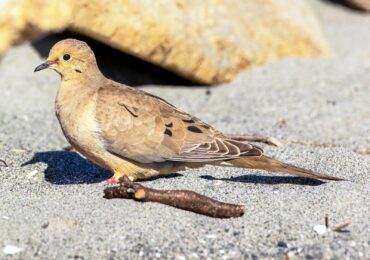
The dove is a universal symbol of peace. Though few doves are naturally white, rock pigeons are sometimes bred to have white coloration, thus mistakenly referred to as white doves.
Members of the Columbidae family, pigeons and doves are close relatives that share a common ancestor, the wild rock dove. Though they are similar, pigeons are larger and stockier, while doves are smaller and slimmer. As highly adaptable birds, pigeons and doves live on most continents. They are not found in Antarctica, the high Arctic or the Sahara Desert.
North America is home to 12 species of pigeons and doves, nine of which are native. Two species of pigeons live in Washington.
The band-tailed pigeon is a native resident of Western Washington forests. The rock pigeon, also known as the feral pigeon, is widespread, particularly in urban areas. Domesticated by humans thousands of years ago, it was first brought to North America by European colonists in the early 1600s.
Two species of doves also reside in Washington, the native mourning dove and the introduced Eurasian collared-dove. Both are common year-round residents across much of North America.
The mourning dove is one of North America’s most abundant birds, which may be surprising, considering that it constructs a flimsy nest and in some places is readily hunted. The mourning dove is named for its trademark mournful call, made by puffing up its throat and without opening its mouth.
An attractive bird, the elegant mourning dove is tan with black wingtips, black spots on its wings and a long, pointy, fan-shaped tail. Its wings make a high-pitched whistling sound when taking flight and landing.

The mourning dove primarily inhabits open areas, particularly around farms and fields, where it dines almost exclusively on plant seeds, mostly from grass and other types of grain. The mourning dove consumes 12-20% of its body weight per day in seeds, which are stored in a crop (lower area of the esophagus) before being digested. It also visits parks, backyards and open forests. Berries account for only 1% of its diet.
A ground forager, the mourning dove sometimes ventures into open areas, where its slow-moving nature makes it an easy target for both aerial and terrestrial predators. Offering millet seed on the ground near forest edges and brushy areas is a sure way to attract these gentle birds to a backyard feeding station.
The mourning dove usually nests in a tree or shrub with dense cover, where it builds a simple twig nest for two eggs. Some choose to nest on the ground or on man-made structures.
Both males and females produce “pigeon milk,” a liquid that is rich in fat and protein, which they feed to the nestlings for 10 days. The process of raising a family takes about six weeks. In the Pacific Northwest, pairs may raise up to three broods a year. In warmer parts of the country, that number may be double.
The Eurasian collared-dove is native to Europe, Asia and northern Africa. It’s said that it was accidentally introduced to the Bahamas in 1974, when several individuals escaped during a pet store robbery. The store owner subsequently released the remaining birds.
In all, about 50 Eurasian collared-doves were set free. Descendants of the Bahamas escapees arrived in Florida in the 1980s. From there, the population quickly spread across most of the United States and Mexico. It has yet to establish itself in Canada and the northeastern United States.
In the early 2000s, Eurasian collared-doves began trickling into Washington. By 2010, they were seen with greater consistency around Puget Sound. Today, populations are well-established throughout the region, and it’s a fairly common year-round resident. Now, when you spot a dove, a closer look is sometimes necessary to determine which dove species you are observing.
The Eurasian collared-dove is slightly larger and stockier than a mourning dove. Its plumage is a paler tan than its cousin, and it sports a trademark black band around the back of the neck, for which it’s named. The tail is also shorter than that of the mourning dove, and a white band on the tips is visible when the tail is fanned.
This year-round cousin of the mourning dove inhabits open areas, particularly around agriculture, and forages on the ground for seeds. “Coo-COO-cook” calls most easily differentiate it from the mourning dove’s “Coo-AH, coo-coo-coo” calls. Pairs may raise up to six broods per breeding season, which may explain how the Eurasian collared-dove so quickly conquered a continent.
There is concern that the nonnative Eurasian collared-dove may displace the native mourning dove, but there is no evidence that this is happening yet.
Doves are lovely birds that live alongside the human community, reminding us of the peace that many long for. Listen and watch for the beautiful mourning and Eurasian collared-doves.

























